Decoding MAGS: The Equal-Weight ETF Tracking the Magnificent Seven Tech Giants
Welcome, fellow navigators of the financial markets! Today, we embark on a deep dive into a fascinating investment vehicle that has captured significant attention: the Roundhill Magnificent Seven ETF, commonly known by its ticker, MAGS. In an era dominated by technological innovation and the sheer scale of a few market-leading companies, understanding how to gain exposure to these giants is crucial. MAGS offers a unique, targeted approach to investing in the stocks that have profoundly shaped recent market dynamics. But what exactly is MAGS, and how does it work? Let’s peel back the layers together, exploring its strategy, performance, and what it truly means to invest in the ‘Magnificent Seven’.
Key features of MAGS:
- Targets seven major tech companies, known as the ‘Magnificent Seven’.
- Utilizes an equal-weighting strategy to provide balanced exposure.
- Employs quarterly rebalancing to maintain its investment strategy.
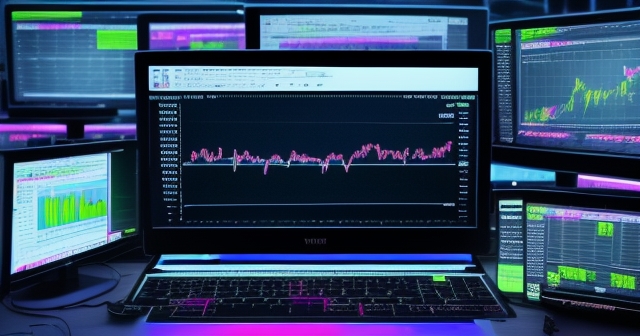
Unpacking the Core Strategy: Equal Weighting and Rebalancing
At the heart of the MAGS ETF lies a distinctive investment strategy: equal weighting. Unlike many traditional market capitalization-weighted funds, which allocate larger percentages to companies with higher market values, MAGS endeavors to give roughly equal importance to each of its constituent stocks. Think of it like a relay race where every runner is expected to carry the baton an equal distance, rather than assigning the longest leg to the fastest runner based on their historical performance. This approach ensures that the fund’s performance isn’t solely dictated by the single largest company in the group. We’ll explore the specific companies in just a moment, but the equal-weight methodology is a fundamental characteristic that sets MAGS apart.
Why is this important? In a cap-weighted index, if one stock soars while others lag, that single stock can dominate the fund’s returns. Conversely, if that dominant stock experiences a significant downturn, it can disproportionately drag the entire fund down. An equal-weight strategy aims to mitigate this concentration risk among the holdings themselves, potentially offering a different risk/return profile compared to a cap-weighted counterpart tracking the same group of stocks. It provides investors with a more balanced exposure to the collective performance of the group, rather than being heavily skewed towards the market leader at any given moment.
To maintain this equal exposure, MAGS employs a process called quarterly rebalancing. This means that every three months, the fund managers adjust the portfolio. If one stock has significantly outperformed and now represents a larger percentage of the fund’s value, some of that stock is sold. Conversely, if a stock has underperformed and its weight has shrunk, more of that stock is purchased to bring its allocation back in line with the others. This regular adjustment ensures the fund consistently reflects its stated objective of equal weighting across its specific set of tech stocks.
This systematic rebalancing has implications for performance and trading activity. It can lead to higher portfolio turnover compared to a passive, cap-weighted fund that only adjusts when indices rebalance. Higher turnover might have tax implications for investors in taxable accounts, although ETFs often mitigate this through their structure. Understanding the rebalancing discipline is key to understanding how the MAGS ETF maintains its specific exposure profile over time. It’s an active element within what might otherwise appear to be a straightforward basket of stocks, highlighting the fund’s classification as an actively managed ETF.

Who Are the Magnificent Seven Holdings? Detailing the Giants
The namesake of the Roundhill Magnificent Seven ETF refers to a specific, highly influential group of companies that have dominated headlines and stock market performance in recent years. These are not just large companies; they are global leaders in their respective technological domains, driving innovation and capturing significant market share. Understanding who these companies are is fundamental to understanding what you are investing in with MAGS. We’re talking about household names, companies that have transformed industries and our daily lives.
The “Magnificent Seven” typically includes:
- Alphabet (GOOGL/GOOG): The parent company of Google, dominating online search, advertising, and increasingly involved in cloud computing and artificial intelligence.
- Amazon (AMZN): A giant in e-commerce and cloud computing (AWS), with expanding interests in logistics, digital streaming, and artificial intelligence.
- Apple (AAPL): Renowned for its consumer electronics (iPhone, Mac), software, and services ecosystem, maintaining a powerful brand loyalty.
- Meta Platforms (META): The parent company of Facebook, Instagram, and WhatsApp, a leader in social media and digital advertising, heavily investing in the metaverse.
- Microsoft (MSFT): A long-standing software and cloud computing powerhouse (Azure), with significant presence in enterprise technology, gaming (Xbox), and a major player in artificial intelligence.
- Nvidia (NVDA): A leader in graphics processing units (GPUs) and semiconductors, which are crucial components for artificial intelligence, gaming, and data centers.
- Tesla (TSLA): A pioneer in electric vehicles and battery technology, also involved in solar energy and artificial intelligence related to autonomous driving.
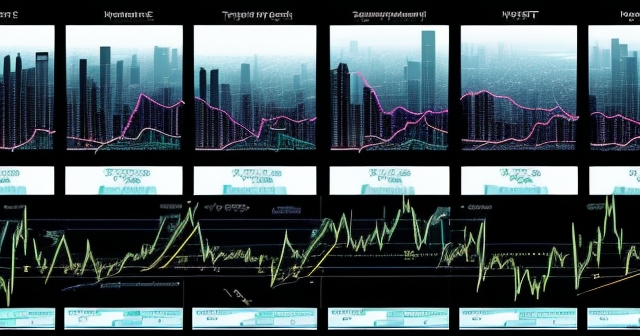
These companies operate across several critical technology and consumer discretionary sectors, including Technology Hardware, E-Commerce Discretionary, Internet Media & Services, and Software. Their combined influence on market indices like the S&P 500 and Nasdaq Composite has been immense, often leading market rallies and setting technological trends. By focusing exclusively on these seven, the MAGS ETF provides a concentrated investment in what many consider the vanguard of modern technological and market leadership.
It’s this concentration that defines MAGS as a non-diversified fund. While holding seven distinct companies might seem like diversification to a novice, in the context of a broader market with thousands of publicly traded stocks, a portfolio focused on just seven represents significant concentration risk. The fortunes of the fund are intrinsically linked to the collective performance of these specific companies. This is not necessarily a negative for investors seeking targeted exposure, but it is a crucial characteristic to understand. Are you comfortable with your investment being tied so closely to this particular group?
MAGS’s Performance: A Look at the Numbers
When considering any investment, especially an ETF focused on a specific segment like the “Magnificent Seven,” performance is often the first thing investors examine. The MAGS ETF, having launched in April 2023, has a relatively short, but notable, track record. Its performance is, by design, heavily tied to the returns generated by its underlying holdings – Alphabet, Amazon, Apple, Meta, Microsoft, Nvidia, and Tesla.
Given the strong performance of these large-cap technology stocks since MAGS’s inception, the fund has shown impressive returns over certain periods. Specifically, performance figures over the 1-year and since inception periods have generally been robust, reflecting the significant growth seen in its constituent companies. These numbers highlight the potential upside of a focused investment in leading technology innovators during a period of strong market sentiment for these stocks. However, as we know, past performance is never a guarantee of future results.
It’s also important to note that short-term performance figures, such as Year-to-Date (YTD) returns, can vary depending on the specific dates referenced and the data source. Market conditions change daily, and the individual performance of the seven stocks can fluctuate significantly over short periods. Examining performance requires looking at different time frames and understanding the context of the broader market and the specific events impacting its holdings.
| Performance Metric | Value |
|---|---|
| 1-Year Return | X% |
| Since Inception Return | Y% |
| YTD Return | Z% |
For potential investors, reviewing metrics like NAV (Net Asset Value) and Market Price is also essential. The NAV represents the per-share value of the fund’s underlying assets, while the Market Price is what the ETF is currently trading for on the exchange. For well-traded ETFs like MAGS, the market price typically tracks the NAV closely, but slight premiums or discounts can occur, particularly during periods of high volatility. Checking recent trading data can give you insight into the liquidity and pricing efficiency of the fund.
Understanding the performance of MAGS involves more than just looking at a single return number. It requires considering the fund’s strategy, the market environment its holdings operate within, and the inherent volatility associated with concentrated exposure to technology leaders. As an investor, asking questions about the drivers behind the reported returns and considering how the fund’s structure (like equal weighting and rebalancing) influences these numbers is part of doing your due diligence.
Understanding Key Fund Metrics: More Than Just Performance
While returns understandably grab attention, evaluating an ETF like MAGS necessitates looking beyond just performance figures. Several key metrics provide crucial insights into the fund’s structure, costs, and operational characteristics. These numbers help you understand how the fund is managed, how large it is, and what it costs you to hold it. Ignoring these can lead to overlooking significant aspects of your investment.
One of the most important metrics is the Expense Ratio. This represents the annual fee charged by the fund to cover its operating expenses, expressed as a percentage of the fund’s assets. MAGS reports an expense ratio of 0.29%. In the world of ETFs, this is generally considered quite competitive, particularly for an actively managed fund with a specific, non-cap-weighted strategy. A lower expense ratio means more of the fund’s total return is passed on to you, the investor, over the long term.
Net Assets, also known as Assets Under Management (AUM), indicate the total value of the investments held by the fund. Figures reported for MAGS’s net assets have shown significant growth, reaching around $2.09 billion according to some sources. A substantial level of net assets is often indicative of strong investor interest and can contribute to better liquidity in trading the ETF shares on the exchange. Larger funds can sometimes also operate more efficiently, although this is not a strict rule.
| Metric | Value |
|---|---|
| Expense Ratio | 0.29% |
| Net Assets | $2.09 Billion |
| Turnover Ratio | 81% |
Another metric is the fund’s Turnover Ratio, often expressed as a percentage. This indicates how frequently the fund buys and sells the securities it holds. A turnover rate of 81%, as reported for MAGS, suggests that the fund’s portfolio is being actively managed and adjusted, largely driven by its quarterly rebalancing strategy to maintain equal weighting. A higher turnover can potentially lead to increased transaction costs within the fund and, as mentioned earlier, might have tax implications for investors in taxable accounts due to realized capital gains, although the ETF structure often minimizes this impact compared to traditional mutual funds.
Other metrics like Yield (if applicable, though growth funds like MAGS may have low or no yield) and average trading Volume provide further context. High trading volume indicates strong liquidity, making it easier for investors to buy and sell shares close to the NAV without significantly impacting the market price. Looking at a fund’s fact sheet or prospectus to find these details is a vital step in evaluating whether it aligns with your investment goals and risk tolerance. These numbers paint a more complete picture than performance alone.
The Non-Diversified Nature: Understanding Risks and Rewards
We’ve touched upon the fact that the Roundhill Magnificent Seven ETF (MAGS) is classified as a non-diversified fund. This is not just regulatory jargon; it’s a fundamental characteristic that profoundly impacts the fund’s risk profile and potential rewards. Unlike broad market index funds that hold hundreds or even thousands of stocks across various sectors, MAGS intentionally concentrates its assets into just seven specific companies.
This concentration is the source of both its unique appeal and its primary risk. The appeal lies in the potential for amplified returns if the “Magnificent Seven” stocks continue their trajectory of strong growth and outperformance. When these market-leading companies are thriving, a concentrated fund like MAGS is positioned to capture a significant portion of that upside, potentially outpacing more diversified benchmarks. For investors who have conviction in the continued dominance and innovation of these specific technology giants, this focused exposure can be highly attractive.
However, the flip side of concentration is heightened risk. If one or more of the Magnificent Seven holdings faces significant headwinds – perhaps due to regulatory challenges, competitive pressures, earnings disappointments (like the Alphabet example mentioned in the data), or sector-wide downturns – the impact on the MAGS ETF’s performance will be substantial. There are fewer other holdings in the portfolio to buffer against negative performance from any single stock. This makes MAGS potentially more volatile than a broadly diversified fund.
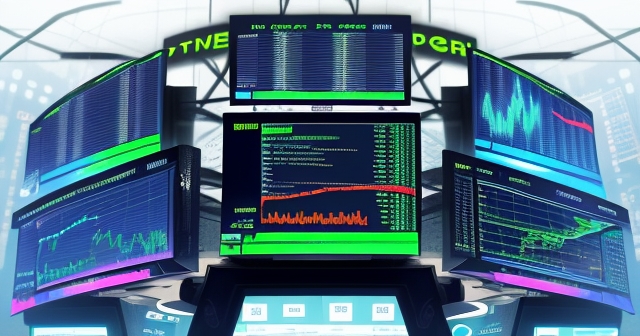
Consider a scenario where new competition emerges, or a key product line faces issues for one of the holdings. In a diversified fund, such an event might be a small ripple, but in MAGS, it could create a much larger wave. Similarly, macroeconomic factors or shifts in investor sentiment that specifically target large-cap technology stocks or specific sectors within technology (like the semiconductor sector impacting Nvidia, or e-commerce trends impacting Amazon) will have a magnified effect on the fund.
Therefore, investing in a non-diversified ETF like MAGS requires a clear understanding of this inherent characteristic. It’s a targeted bet on a specific group of companies. Are you comfortable with the possibility of higher volatility in pursuit of potentially higher concentrated gains? Do you already have significant exposure to these stocks or the broader tech sector in other parts of your portfolio? Thinking through these questions is crucial before allocating capital to a fund with this level of concentration.
Beyond the Stocks: The Role of Other Holdings
While the narrative around the Roundhill Magnificent Seven ETF (MAGS) understandably focuses on its namesake holdings – the seven dominant tech companies – a closer look at its portfolio composition can reveal other significant asset classes. According to data provided, the fund held a substantial allocation to Treasury Bills, reported at around 50.19% as of a specific date (06/24/24). This is a critical detail that influences the fund’s actual exposure and risk profile.
Why would a fund designed to track specific tech stocks hold such a large portion in Treasury Bills, which are considered low-risk government debt? This could be due to several factors. It might be related to cash management within the fund, perhaps holding proceeds from subscriptions that haven’t yet been fully deployed into the target stocks, or managing cash flows related to the quarterly rebalancing process. Alternatively, it could reflect a deliberate tactical positioning by the active management team, although the fund’s core mandate is focused on the Magnificent Seven equities.
Regardless of the specific reason on that particular date, the presence of a large allocation to assets like Treasury Bills means that, at times, the fund’s performance will not solely track the performance of the seven stocks. A significant T-Bill holding introduces a component of safety and yield from government debt into the portfolio. While this can potentially reduce volatility during periods of equity market stress, it also means the fund may not fully participate in the upside when the “Magnificent Seven” stocks are rallying strongly.
| Potentials | Risks |
|---|---|
| Amplified returns during growth periods | Higher volatility than diversified funds |
| Concentration on leading firms | Increased exposure to individual stock risks |
| Potentially lower expense ratio | Market sentiment affecting all seven holdings overall |
For investors, this highlights the importance of looking at the fund’s actual, recent portfolio composition, not just its stated strategy. The asset allocation can fluctuate. A fund that is 50% in tech stocks and 50% in Treasury Bills is fundamentally different in its risk and return characteristics than a fund that is 95%+ invested directly in those tech stocks. This reported T-Bill allocation adds a layer of complexity to understanding the fund’s true exposure at any given moment and reinforces its classification as an actively managed ETF, capable of making such tactical decisions or managing cash flow in ways that impact asset allocation.
Understanding this aspect is vital for setting realistic expectations about the MAGS ETF’s behavior. It underscores that while the fund’s primary objective is exposure to the Magnificent Seven, the path to achieving that objective might involve portfolio construction elements that temporarily, or even strategically, dilute that pure equity exposure. Always check the most recent fund fact sheet or reports for detailed portfolio breakdowns.
Market Forces Shaping MAGS: Earnings, Themes, and Investor Sentiment
The performance of the Roundhill Magnificent Seven ETF (MAGS) is intrinsically linked to the broader market dynamics that affect its constituent holdings. These aren’t companies operating in a vacuum; they are constantly influenced by a confluence of factors, from individual company performance to global economic trends and shifts in investor sentiment. Understanding these forces provides crucial context for anyone considering an investment in MAGS.
Quarterly earnings reports from the “Magnificent Seven” companies are perhaps the most immediate and impactful drivers of their stock prices, and by extension, MAGS’s performance. When a company like Alphabet reports earnings that miss expectations or provides cautious guidance, its stock price can drop significantly, as observed in recent market news. Given the concentrated nature of MAGS, such moves in even one of its core holdings can noticeably affect the fund’s NAV and market price. Strong earnings, on the other hand, can fuel rallies.
Beyond individual earnings, broader sector trends and thematic influences play a massive role. The relentless progress in Artificial Intelligence (AI), for instance, has been a significant tailwind for several of the Magnificent Seven, particularly Nvidia and Microsoft, who are at the forefront of AI hardware and software development. Discussions around AI disruption, like the mention of “DeepSeek” in some market commentary, highlight how specific technological advancements and competitive developments can shape the narrative and valuation surrounding these stocks and the broader Technology Sector.
Macroeconomic factors also cast a long shadow. Discussions about potential central bank actions, such as interest rate cuts or concerns about inflation, can impact the valuation of growth stocks, which the Magnificent Seven predominantly are. Geopolitical events, changes in trade policy (like tariffs), or shifts in consumer spending can all affect the business models and future prospects of these global corporations. For example, e-commerce trends impact Amazon, while global consumer demand affects Apple’s hardware sales.
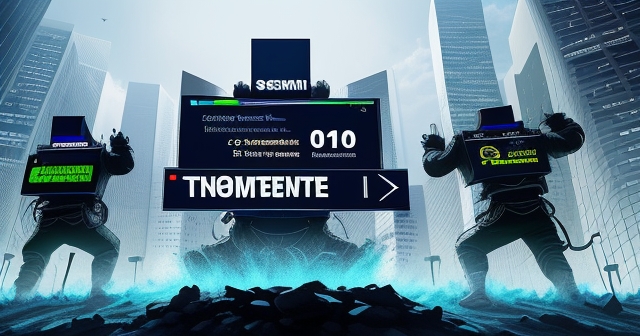
Finally, investor sentiment and large-scale portfolio shifts by major players matter. News reports detailing investment decisions by prominent funds or investors, such as those managed by figures like Soros or institutions like Berkshire Hathaway, can signal broader market perspectives on Big Tech. If large institutional investors are increasing or decreasing their exposure to these names, it can reflect changing confidence levels, risk appetite, or strategic asset allocation decisions that influence market demand and price levels for the Magnificent Seven stocks and thematic ETFs like MAGS.
Investing in MAGS is therefore not just a bet on seven companies in isolation, but a bet on their ability to navigate and thrive within this complex web of company-specific news, sector trends, macroeconomic forces, and evolving investor sentiment. Staying informed about these dynamics is crucial for any investor holding this ETF.
MAGS in the ETF Landscape: How it Compares
The Roundhill Magnificent Seven ETF (MAGS) exists within a vast and growing landscape of Exchange-Traded Funds (ETFs). Understanding where MAGS fits in requires comparing it to other popular funds, particularly those focused on technology or large-cap growth. While many ETFs offer exposure to the “Magnificent Seven” companies, MAGS’s unique strategy and focus differentiate it.
Broad market index funds like the S&P 500 or funds tracking the Nasdaq Composite hold the Magnificent Seven, but these stocks represent only a portion of their portfolios (albeit a very large and influential portion in cap-weighted versions). Funds like the Invesco QQQ Trust (QQQ) or Invesco NASDAQ 100 ETF (QQQM) focus on the largest non-financial companies listed on Nasdaq, which heavily includes the Magnificent Seven. Similarly, sector-specific ETFs like the Technology Select Sector SPDR Fund (XLK) or broader technology funds like the Vanguard Information Technology Index Fund ETF Shares (VGT) also feature these stocks prominently, often with high cap-weighted allocations.
| ETF | Focus | Weighting |
|---|---|---|
| MAGS | Magnificent Seven | Equal-Weighted |
| QQQ | Top Nasdaq Companies | Market Cap-Weighted |
| XLK | Technology Sector | Market Cap-Weighted |
The key differentiator for MAGS compared to these funds is its concentrated focus and its equal-weight strategy. While QQQ or XLK might have one or two of the Magnificent Seven making up 15-20%+ each of the fund, MAGS aims to have each of the seven represent roughly an equal percentage (~14.3% initially, before market movements). This means MAGS has relatively less exposure to the largest stocks (like Apple or Microsoft in cap-weighted indices) but relatively more exposure to the smaller stocks (like Tesla or Nvidia, depending on market cap at the time of rebalancing) within the group, compared to a cap-weighted fund holding the same constituents.
This strategic difference means MAGS is not simply a proxy for the Nasdaq 100 or the S&P 500 Tech sector. Its performance will diverge, potentially significantly, based on whether the smaller ‘Magnificent Seven’ stocks are outperforming the larger ones, or vice versa. For investors already holding broad tech or growth funds, MAGS offers a way to gain more specific and equally-balanced exposure to this particular subset of companies, rather than doubling down on the cap-weighted leaders they may already own in other funds.
Furthermore, thematic ETFs focusing on areas like semiconductors (SOXX, SMH) or Artificial Intelligence (AIQ) may include some of the Magnificent Seven (like Nvidia, Microsoft, Alphabet) but will also hold many other companies relevant to their specific theme. MAGS is specifically and exclusively focused on *these seven* companies, regardless of their primary industry classification beyond being large, influential tech/tech-adjacent firms. This makes MAGS a highly targeted tool for investors seeking pure play exposure to the ‘Magnificent Seven’ concept, with the added twist of the equal-weighting mechanism.
Important Operational Details: Exchange Change and More
Beyond the investment strategy and performance, understanding the operational details of an ETF is part of informed investing. The Roundhill Magnificent Seven ETF (MAGS) has had some notable operational developments that are important for investors to be aware of. One such detail mentioned in the provided data is a change in the fund’s primary listing exchange.
Effective February 3, 2025, the primary listing exchange for MAGS moved from Nasdaq to Cboe BZX Exchange. While this might seem like a minor technicality, the exchange listing is where the majority of the ETF’s trading activity takes place. Moving to a different exchange involves regulatory processes and changes how the fund is displayed and traded on brokerage platforms. For most investors, this change is largely seamless, handled by their brokerages. However, it is a procedural shift reflecting decisions made by the fund issuer, Roundhill Investments.
Other operational aspects worth noting include the fund’s inception date (April 2023), which gives context to its performance history length. The reported high Turnover % (81%), while related to strategy, is also an operational characteristic reflecting the frequency of trading within the fund. Understanding these operational details, while less glamorous than performance charts, is part of fully grasping the fund’s profile. They speak to the management and underlying infrastructure of the ETF.

For active traders or those using specific brokerage platforms, awareness of the exchange listing might be slightly more relevant for factors like available order types or data feeds, but for the vast majority of long-term investors, the change from Nasdaq to Cboe BZX is primarily an informational update. It serves as a reminder that ETFs, like any financial product, have administrative and operational layers managed by the issuing firm, Roundhill Investments.
Always refer to the official fund website or regulatory filings for the most current and accurate operational information. Details regarding custodians, administrators, and other service providers are typically available in the fund’s prospectus and statement of additional information. These documents, while dense, contain the full legal and operational framework of the ETF.
Is MAGS Right for Your Portfolio? Concluding Considerations
We have journeyed through the core components of the Roundhill Magnificent Seven ETF (MAGS), examining its distinctive equal-weight strategy, its focus on the powerful “Magnificent Seven” technology companies (Alphabet, Amazon, Apple, Meta, Microsoft, Nvidia, Tesla), its performance characteristics, key financial metrics like the 0.29% expense ratio and significant net assets, the implications of its non-diversified structure, the interesting detail of other holdings like Treasury Bills, the influence of market forces, and its position relative to other tech ETFs.
So, is MAGS the right investment vehicle for you? The answer, as is often the case in investing, depends on your individual circumstances, investment goals, time horizon, and risk tolerance. MAGS offers a straightforward, targeted way to gain exposure to a specific group of influential companies that have been major drivers of market returns. Its equal-weight approach provides a different flavor of exposure compared to standard cap-weighted indices or sector funds. For investors who have high conviction in the continued growth and innovation of these specific seven firms and prefer an equal allocation among them, MAGS presents a compelling option.
However, it is crucial to remember the inherent risks. As a non-diversified fund, MAGS is highly concentrated. Its performance is tightly bound to the fortunes of these seven companies. While this offers potential for significant gains if they outperform, it also exposes you to greater volatility and risk if one or more face difficulties. The reported presence of substantial Treasury Bill holdings at times also means the fund’s pure equity exposure can fluctuate, influencing its correlation with the equity market.
Furthermore, consider your existing portfolio. Do you already have significant exposure to these companies or the broader technology sector through other investments? Adding MAGS might further concentrate your holdings. Or, perhaps, you are specifically looking to carve out a dedicated, equally-weighted segment focused on these specific names as a complement to more diversified holdings.
Ultimately, making an informed decision about MAGS, or any ETF, requires doing your homework. Look beyond headlines and past performance. Understand the strategy, the risks, the costs, and how the fund fits into your overall investment plan. Consider the long-term outlook for the “Magnificent Seven” and the sectors they operate within. By applying the knowledge we’ve discussed today, you can approach the decision with greater confidence, aligning your investment choices with your objectives as a savvy market participant.
mags etfFAQ
Q:What is the main investment strategy of MAGS?
A:The main strategy of MAGS is to use an equal-weighting approach for its holdings, providing balanced exposure across the “Magnificent Seven” tech giants.
Q:How frequently does MAGS rebalance its portfolio?
A:MAGS rebalances its portfolio quarterly to maintain equal weighting among its constituent stocks.
Q:What are the associated risks of investing in MAGS?
A:MAGS is a non-diversified fund, which means it has higher concentration risk linked to its seven holdings, leading to potentially more volatility.
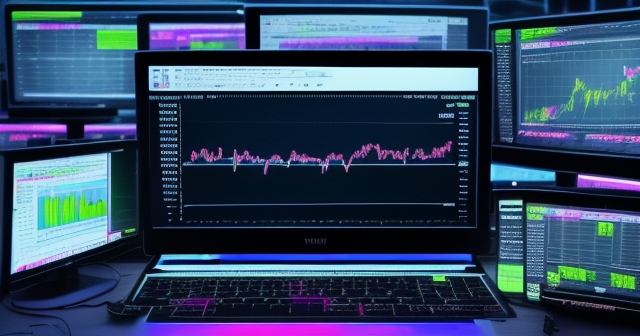
留言